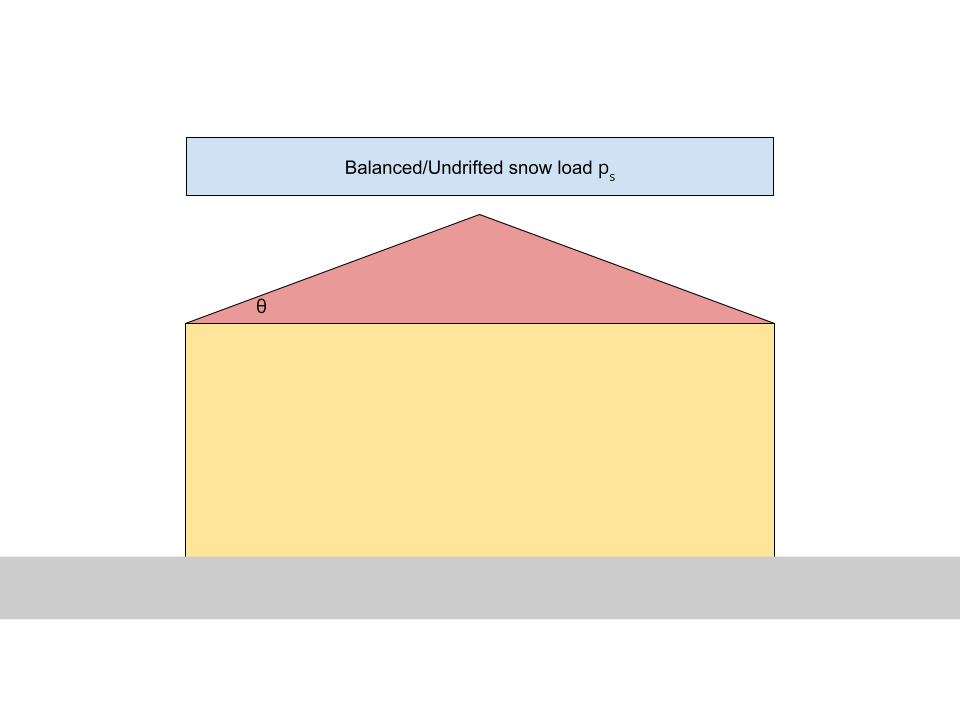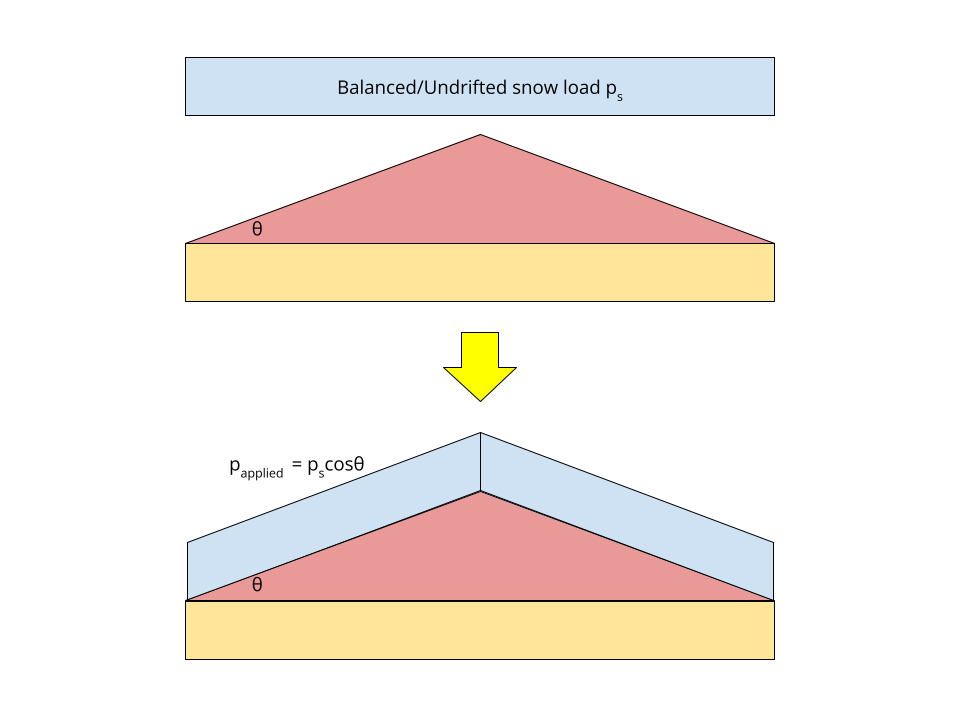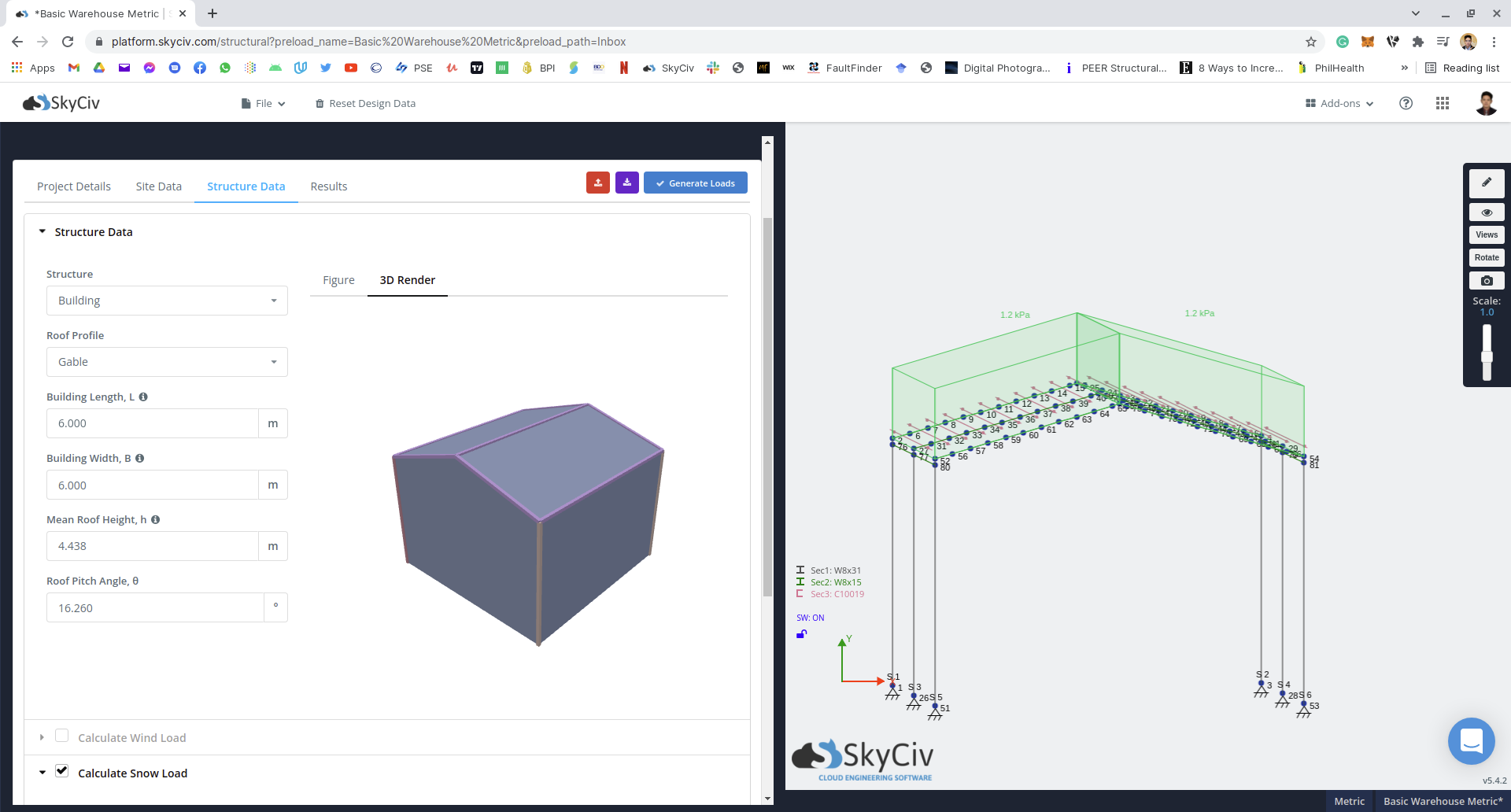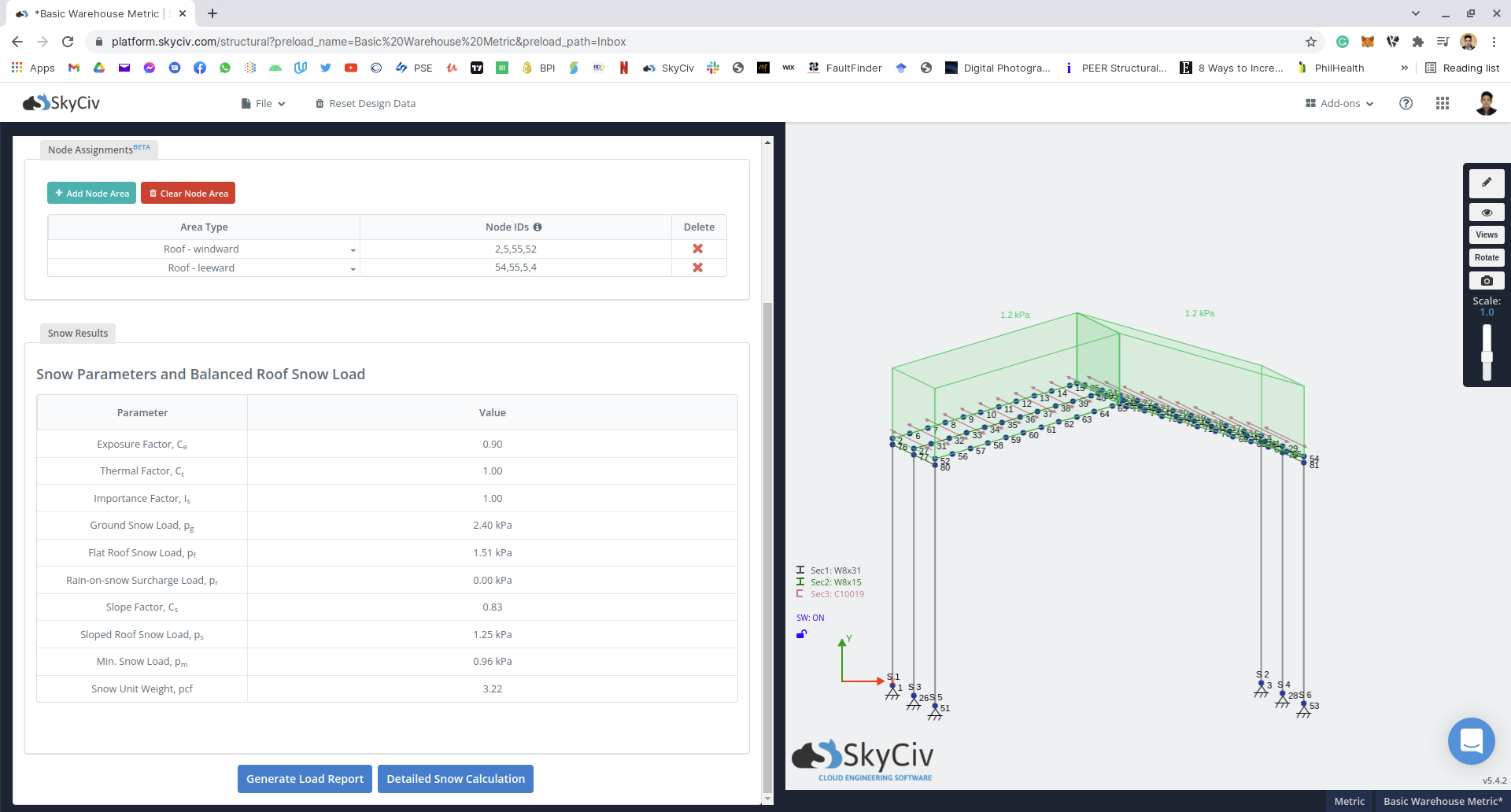使用集成在 S3D 中的雪荷载负载生成器
在计算雪荷载时, 屋顶上的平衡或不漂移的雪荷载始终假定应用在屋顶区域的水平投影上,与应用活荷载的方式相同. 
为了将雪荷载施加到屋顶上, 我们需要转换压力 \({p}_{s}\) 乘以 cos 值θ. 
在 S3D 中使用 SkyCiv Load Generator
对于 专业帐户用户, 您可以通过 S3D 中的区域负载部分访问负载生成器. 从模块, 产生平衡/不漂移的雪荷载 \({p}_{s}\) 只要 屋顶迎风和背风节点 被定义为 节点分配 SkyCiv 的 3D 建模和分析工具.

屋顶迎风节点和背风节点的定义规则如下所示:


因此, 相应的雪荷载如下所示:

从这个模型, 平衡/无漂移雪荷载 \({p}_{s} = 1.25 kPa\) 通过乘以余弦值来转换 屋顶倾斜角θ 我们将插入已知值 0.9603. 因此, 相应的屋顶雪荷载等于 \( p = 1.20kPa\). 使用开放区域荷载, 然后将其应用于模型的屋顶表面. 对于不平衡/漂移的情况, 需要手动输入. 此功能仅适用于 ASCE 7-10, asce 7-16, NBCC 2015, 在 1991, 和AS / NZS 1170.
帕特里克·艾尔斯沃斯·加西亚
结构工程师, 产品开发
土木工程硕士
领英
结构工程师, 产品开发
土木工程硕士
领英
参考资料:
- 美国土木工程师学会. (2017, 六月). 建筑物和其他结构的最小设计载荷和相关标准. 美国土木工程师学会.



